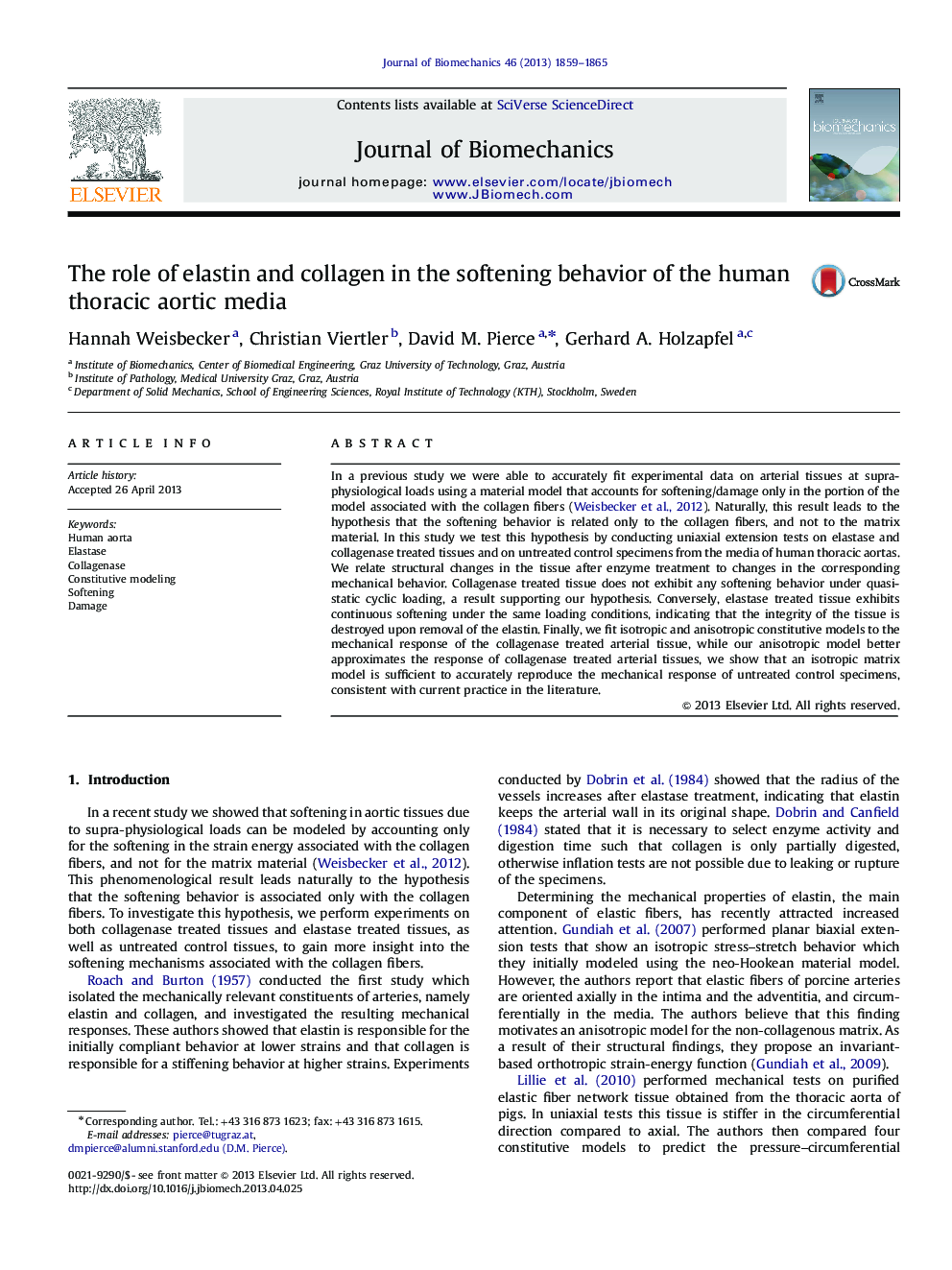| Article ID | Journal | Published Year | Pages | File Type |
|---|---|---|---|---|
| 10432755 | Journal of Biomechanics | 2013 | 7 Pages |
Abstract
In a previous study we were able to accurately fit experimental data on arterial tissues at supra-physiological loads using a material model that accounts for softening/damage only in the portion of the model associated with the collagen fibers (Weisbecker et al., 2012). Naturally, this result leads to the hypothesis that the softening behavior is related only to the collagen fibers, and not to the matrix material. In this study we test this hypothesis by conducting uniaxial extension tests on elastase and collagenase treated tissues and on untreated control specimens from the media of human thoracic aortas. We relate structural changes in the tissue after enzyme treatment to changes in the corresponding mechanical behavior. Collagenase treated tissue does not exhibit any softening behavior under quasi-static cyclic loading, a result supporting our hypothesis. Conversely, elastase treated tissue exhibits continuous softening under the same loading conditions, indicating that the integrity of the tissue is destroyed upon removal of the elastin. Finally, we fit isotropic and anisotropic constitutive models to the mechanical response of the collagenase treated arterial tissue, while our anisotropic model better approximates the response of collagenase treated arterial tissues, we show that an isotropic matrix model is sufficient to accurately reproduce the mechanical response of untreated control specimens, consistent with current practice in the literature.
Related Topics
Physical Sciences and Engineering
Engineering
Biomedical Engineering
Authors
Hannah Weisbecker, Christian Viertler, David M. Pierce, Gerhard A. Holzapfel,
